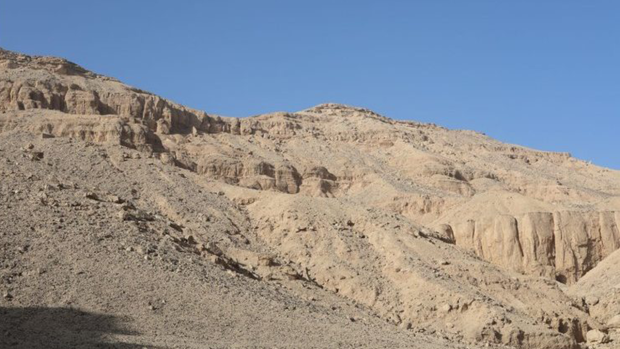Jun 21, 2023
U.S. Critical Metals tackles domestic critical minerals scarcity

Every three years, the U.S. Government’s Department of the Interior publishes a list of critical minerals established with criteria detailed in The Energy Act. This assessment considers various factors, such as the significance of specific minerals, the risk of relying on imports, the willingness of countries to supply these minerals to the U.S., and the overall stability of supply chains.
Published last year, the most recent list includes 50 minerals – many of them essential for electrification, electric vehicle batteries, communication devices, and national defense technology. Many of these minerals are sourced offshore, with uncertain supply. For example, lithium, vital for electric vehicle batteries, is mainly mined in Australia from hard rock operations and Latin America from brine operations. China's acquisition of lithium mines positions them to control one-third of the global supply by 2025.
That’s a challenge mining exploration firms including U.S. Critical Metals Corp. (TSXV: USCM | OTCQB: USCMF) are starting to address, staking exploratory claims in the U.S. itself and using new technologies to extract the minerals from types of rock that have not been previously tapped. Demonstrating its commitment to securing domestic mineral resources, the company has acquired three U.S. properties with promising potential in a diverse array of critical minerals including lithium, rare earths (neodymium and praseodymium) and cobalt.
Exploring domestic minerals sources vital for electrification
On April 11 2023, U.S. Critical Metals announced the closure of a $2.5 million Canadian private placement led by Echelon Wealth Partners to support exploration at the sites.
“U.S. Critical Metals is positioned for a once-in-a-generation opportunity in critical metals,” says CEO and Director Darren Collins. “What we’re talking about is a transition of one of the largest industries in the world, the transportation industry, from hydrocarbons to minerals. That doesn’t happen very often.”

“These minerals are absolutely essential for government and industry to meet their economic objectives,” Collins adds. “The fundamental issue with all these commodities is the U.S. doesn’t have sufficient domestic sources of supply. This creates a significant security of supply issue and jeopardizes economic objectives.”
Three U.S. sites show promising initial results – test drilling set to get underway at Clayton Ridge project this summer
The company’s Clayton Ridge project is its most advanced. Located in Nevada on a ridge above only source of lithium in the U.S. and initial surface testing and subsurface mapping show potential. Most lithium is sourced from hard rock or brine mining operations in Latin America and Australia, with some in Canada.
The U.S. Critical Minerals project sits on volcanic clay, which has not previously been tapped for lithium, but is proven to provide robust recoveries at a pilot plant scale. GM recently invested Lithium America to the tune of $650 million to develop the Thacker Pass mine in Nevada. Assuming all goes to plan, this project should prove the extraction of lithium from clay at commercial scale and result in a rerating of the values attributable to lithium clay assets.
“Lithium from clay, in my opinion, is the solution to the U.S. shortfall,” Collins says. “Now is the time to get positioned in these assets.”
U.S. Critical Metals’ project consists of 180 claims across 3,600 acres. Initial surface tests have demonstrated mineral concentration levels approximately three times higher than the economic threshold. The project hosts broadly disseminated lithium clay beds visible at surface and the company believes these beds could be up to 200 meters thick. With all the necessary permits secured, the company is poised to commence test drilling later this summer.
The company’s Sheep Creek rare earth project in Montana is estimated to be a year away from test drilling. Historically where stainless-steel additive niobium was mined, the site has 223 claims across 4,500 acres. Initial sampling on the surface and in three shallow mineshafts used decades ago shows up to 18% rare earth elements, including a significant amount of neodymium and praseodymium – rare earth metals used in making electric vehicle batteries, electronics including cellphones, super-strong alloys for aircraft engines, and even in national defense applications such as laser range finders and air defense systems. Tests also show other minerals on the U.S.’ critical minerals list.
On Forest Service land in a region without extensive previous mining, U.S. Critical Metals will have to secure environmental permits and conduct community engagement prior to exploration – perhaps the biggest challenge ahead for the project. That said, the U.S. Army Research Lab has expressed interest in the area, providing funding to Montana Technological University to complete technical studies on Sheep Creek.
“We’re looking to open up a new rare earth district in the U.S. Based on sampling results, Sheep Creek is one of the highest grade unidentified rare earth assets in the U.S.,” Collins says.
The company’s third property shows promise for Cobalt, which is primarily mined in the Congo, with significant ownership by Chinese firms. U.S. Critical Metals’ Haynes Cobalt project is a 192-hectare site in Idaho, directly adjacent to a fully commissioned Cobalt mine. This project is unique as the Idaho Cobalt Belt is one of, if not the only, place in the U.S. where cobalt can be found as a primary metal in a deposit. Currently, they’re holding the property for future exploration.
With three domestic properties offering potential sources of several minerals the U.S. government has identified as critical, U.S. Critical Metals is well-positioned to take advantage of the drive towards electrification - and interest in supply from reliable jurisdictions. That could create real value for shareholders while making the company part of the solution.
Learn more about U.S. Critical Metals Corp. on its website and on social media:
